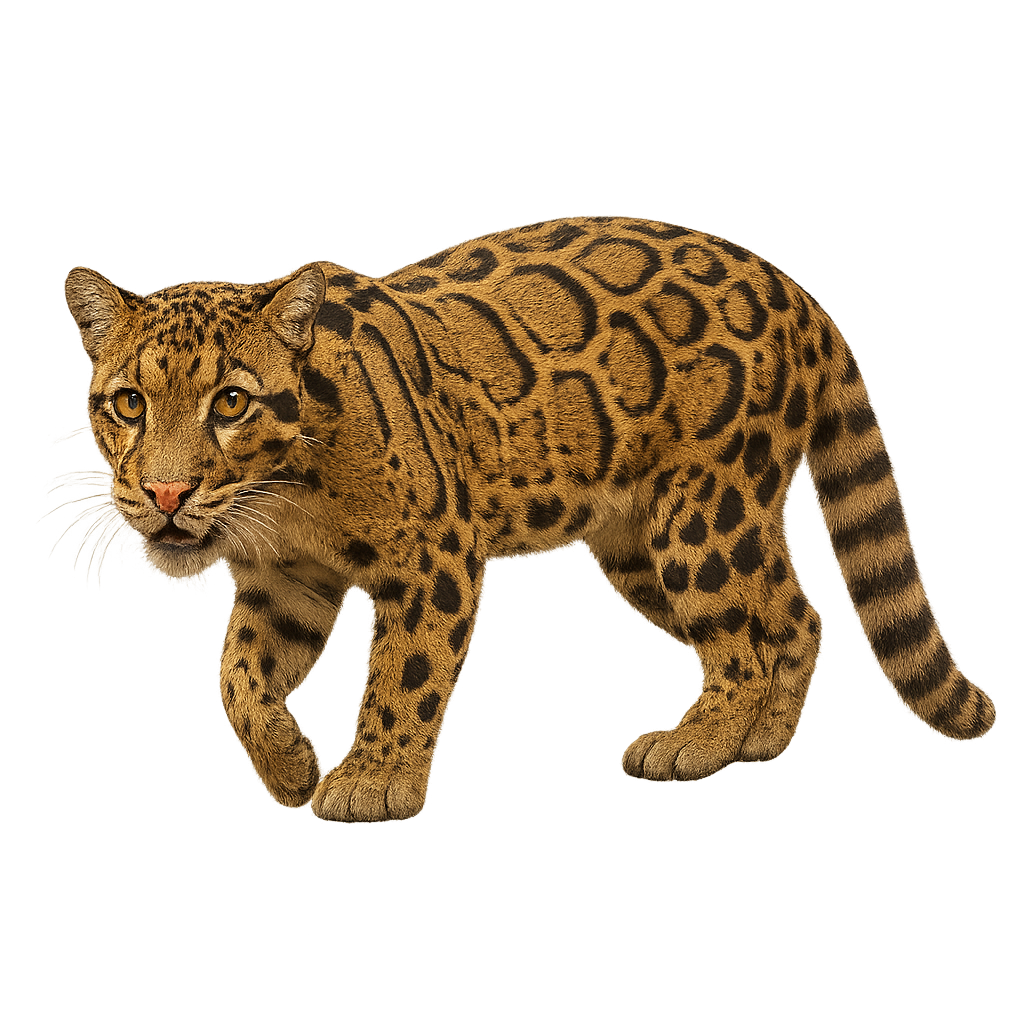Your wildlife photography guide.
Explore the clouded leopard in detail, study its behavior, prepare your shots.
Where to observe and photograph the clouded leopard in the wild
Learn where and when to spot the clouded leopard in the wild, how to identify the species based on distinctive features, and what natural environments it inhabits. The WildlifePhotographer app offers tailored photography tips that reflect the clouded leopard’s behavior, helping you capture better wildlife images. Explore the full species profile for key information including description, habitat, active periods, and approach techniques.
Clouded leopard
Scientific name: Neofelis nebulosa

IUCN Status: Endangered
Family: FELIDAE
Group: Mammals
Sensitivity to human approach: Suspicious
Minimum approach distance: 30 m
Rut period: December to January
Gestation: 85-93 jours
Births: February to April
Habitat:
Tropical forests, mountainous areas, and cloud forests in Southeast Asia
Activity period :
Mainly active at night, generally discreet during the day.
Identification and description:
The Clouded Leopard is a medium-sized cat primarily found in the tropical and subtropical forests of Southeast Asia, notably in India, Nepal, Bhutan, Thailand, Malaysia, and Indonesia. It measures between 50 and 75 cm in length, with a tail ranging from 60 to 90 cm, and weighs between 12 and 20 kg. Its coat is characterized by spots and rosette patterns that help it blend perfectly into the dense vegetation of its habitat. The Clouded Leopard is an excellent climber and spends much of its time in trees, hunting birds, squirrels, monkeys, and small deer. Although the Clouded Leopard's population remains relatively stable, it is threatened by habitat loss, poaching, and forest fragmentation. This species is currently listed as "vulnerable" by the IUCN.
Recommended lens:
200 mm – adjust based on distance, desired framing (portrait or habitat), and approach conditions.
Photography tips:
Photographing the clouded leopard requires a telephoto lens to capture its discreet movements in the trees or dense vegetation. The best light for photographing this feline is at dusk or dawn, when it is active. Be extremely discreet and respect its safety distance, as it can be difficult to spot in thick forests.
The WildlifePhotographer App is coming soon!
Be the first to explore the best nature spots, track rutting seasons, log your observations, and observe more wildlife.
Already 1 449 wildlife lovers subscribed worldwide

